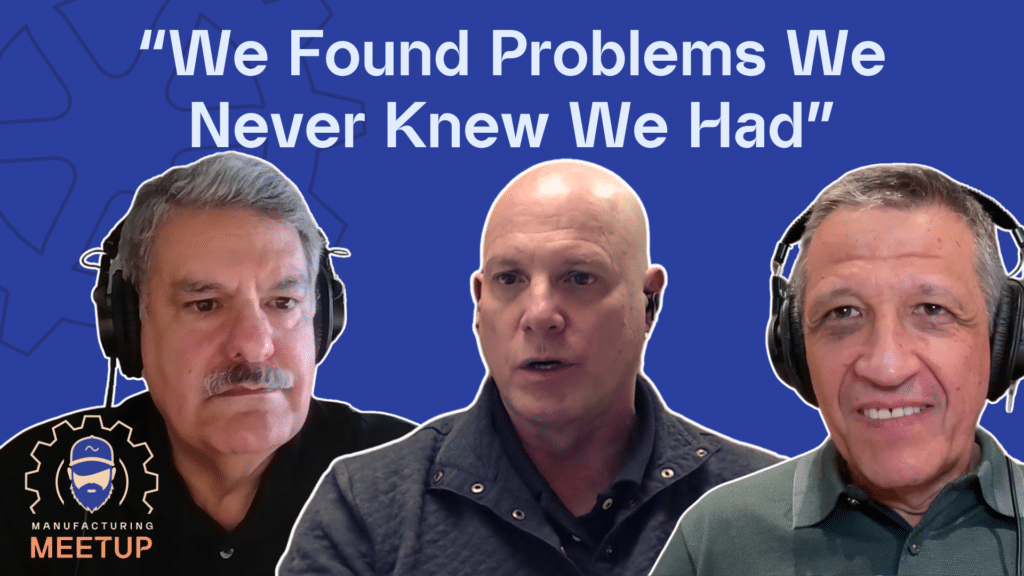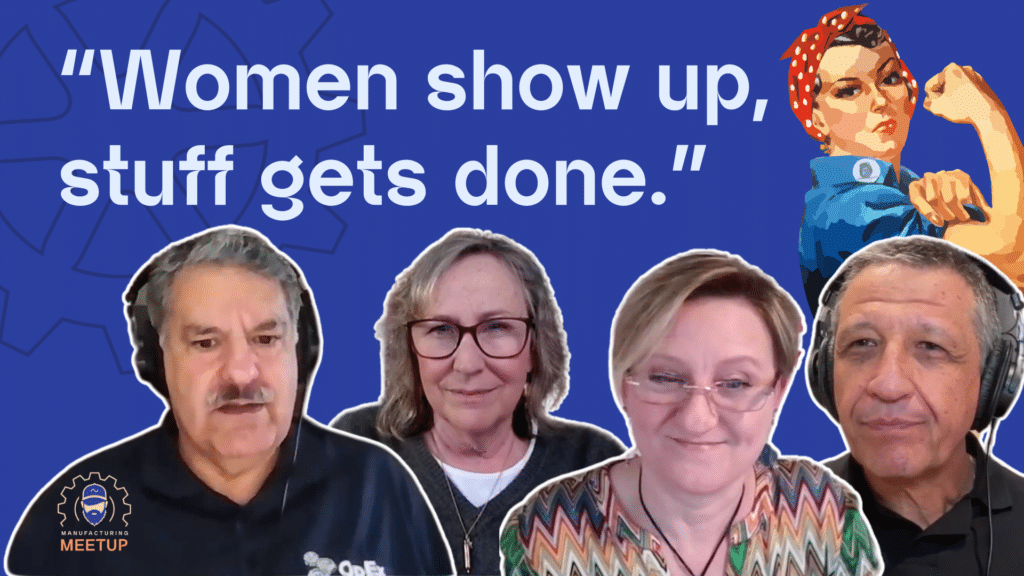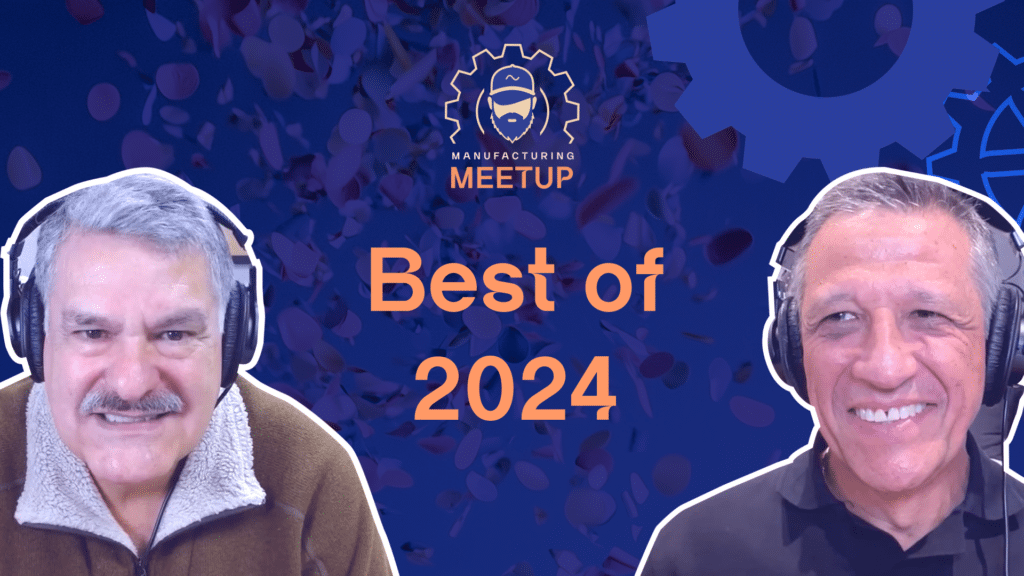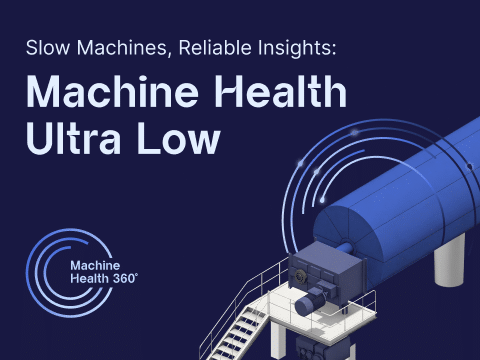AMA: Pilot Purgatory, Crazy Root Causes, and More
In this episode of the Manufacturing Meet Up podcast, Ed Ballina and Alvaro Cuba are taking listener questions in an Ask Me Anything (AMA) format.
They discuss:
- Strategies to avoid pilot purgatory when implementing new technologies
- Crazy stories about the unexpected root causes of machine failures (squirrels play a role)
- Their personal journeys into the manufacturing industry
To keep the conversation going:
Email us: mmu@augury.com
Find us on The Endpoint: endpoint.augury.com
Download the full podcast here:
Apple
Spotify
Amazon Music
iHeart Radio
YouTube Music (formerly Google Play)
Full Transcript
Ed Ballina:
Manufacturing peeps, I’m Ed Ballina.
Alvaro Cuba:
Hey, buddies. Alvaro Cuba.
Ed Ballina:
Well, you know, we have another AMA, and it’s not the American Medical Association, to be clear. It’s Ask Me Anything. And we’re excited to bring you a number of other questions that have come to us. Alvaro, you’ve got some thoughts and ideas on this one as well.
Alvaro Cuba:
Yeah, well. We want to say thank you to the guys that are sending the questions in. And that gives us an opportunity to share and comment on those. So please continue to send questions, comments, and whatever is in your mind. There’s no need to be a question, just whatever, obviously feedback. So, all welcome. Absolutely. Give us your highlights.
Ed Ballina:
Welcome to the Manufacturing Meet Up podcast, the show where we kick back, we talk about efficiencies on the plant floor, and we get real on our down times, sometimes even having an adult beverage. So, welcome to Manufacturing Meet Up.
Alvaro Cuba:
Okay, guys, so let’s start. We have today three questions that we are taking from the listeners.
So first one is how we can avoid pilot purgatory when rolling out new tech in the plant floor. Ed, you want to start?
Ed Ballina:
Yep, absolutely. We all have experienced this. You have a great product. You try to pitch it to a company.
They’re like, hey, that’s kind of interesting. We have, you know, 15 plans coming to one plant. Show me what you can do. And then we’ll talk about the rest. Makes sense. The problem is sometimes you get involved, you deliver great results and it just takes a long time to get out of that, that trial. Right. When in the meantime, you’re seeing tremendous opportunities. So one of the first things you want to start with is let’s make sure we benchmark. Right. So what’s our baseline?
Before you start any new endeavor in a business, you want to know what your base is so you know where you’re starting from. And then you can measure your actual performance coming off of that, that you can then claim as the fruit of the labor, right? What are you getting for this initiative? Also being able to see this with your own eyes, you know, as you start a pilot in a facility, get folks from other facilities to come in and see what you’re experiencing that buys you a lot of credibility. One example is that in the previous podcast, we just had David Ballina talk a little bit about TPM, right? He’s a shop floor guy. He’s experienced that out there. Having those insights are incredibly powerful. And they also give you a lot of credibility, right? When you have the people actually do the work, say, hey, here’s how it’s improving. It’s tremendous. How about your thoughts there, Alvaro?
Alvaro Cuba:
I echo what you’re saying and think about, I don’t need a pilot. So if you think I don’t need a pilot, what would you do for not needing a pilot? Yep. No. So go and ask what other people are doing, how they test it, what were their pitfalls, how they did it, bring all that, do the visits I said was mentioning and get there and you see it and then bring a good concrete examples very related to what you are doing. So you can tell internally, sell it to your folks internally to your manager or whoever, say this is what the competition is doing or others are doing. These are the benefits and this is what we are going to have. Very concrete, straight.
That avoids a lot of back and forth and pilot thinking and all that. Then you can go choose the final thing is choose the right area on the right side that you can go and demonstrate that, not with the mentality of pilot, you go and demonstrate that it works. And if it fails, fail fast. Yeah. And then you go to the next.
Ed Ballina:
Figure out what went wrong. And the other thing that I, if I could just kind of pass on, right? Having been both in kind of frontline operations and also staff roles, I can tell you that a lot of people, you come into the plants, you’re talking about, you know, a new approach and all that. And it’s almost in every facility you’re going to hear, well, we’re different here. And I’m sorry, folks, I have to tell you, you are. Every plant has its own ecosystem, its own personality. But the issues from paper making, right, to soda, to cars, the basic issues that you encounter in an operation are almost exactly the same at a high level. The technology’s different and some of the pushes and pulls may be, but at its core, it’s the same failure. Anyway, great points. Get out of purgatory fast, okay? Enjoy the fruits of your labor, because you can really, really…You can delay a project. You got a project that gives you a six month payback, right? Every month you wait, you’re leaving money on the table. Go get it. Get out of purgatory. Go make it happen. So we all had a kind of cool question that came out as well. This is a fun one. And Alvaro and I have to constrain ourselves because we probably have 15 answers to this. But the question is, what was the strangest root cause of failure that you ever discovered in a machine or process?
Alvaro, you take it and run with it.
Alvaro Cuba:
Well, I’m sure you all found the nuts or bolts or a bit of cement from previous construction or cloth. So I assume those are common. Sometimes you can see sabotage and internal and you need to be eyes on it, but one, one interesting that happened to me was with electromagnetics. It was, this equipment was failing and we were not able to detect what was it until someone came and said, what other equipment is running around?
And one of that equipment was generating an electromagnetic field that was impacting what we were doing here. And obviously we didn’t see it, but immediately we separated. It was fixed. And one last one is no real failure. Sometimes you are so fixed, this is failing, this is failing. And then you go in and go out and you continue. Sometimes the failure is not there. Sometimes the failure comes with the material from the previous part, no? Or something else. So those are a couple of interesting ones. How about you Ed?
Ed Ballina:
Yeah, you’re absolutely right. Sometimes we go chase a symptom, right? We see a problem.
And we go chase it, think of the problems there, we don’t realize that it might be two or three steps further back in the process. You got to get to the root cause. So I was going to tell the story about the time and one of my plants had a big electrical shutdown because somehow a squirrel got into the switch gear and fried itself. Okay. But the cooler one, now to mention electromagnetism, when I was running the San Antonio plant, we had a can depalletizer that was very old. I always liked new technology. So we bought a brand new can depalletizer that did not use any conveyors. They used an air bed, like a hockey table, right? And this thing was supposed to give us, you know, just much more performance, no wear and tear. We put it in and the equipment will not deliver filler speeds. We were running 1,200 cans a minute before we installed this. This thing should give us plenty of capacity. Couldn’t run it above about 1,050 to 1,100 cans a minute. To spare you the pain, we found out the root cause.
Depalletizers are many times a second floor device, so they sit almost, you know, kind of like a second story. And it was, when we put it in, it was summer in San Antonio and we had a big personnel fan because it gets pretty hot up there to close the ceiling. Long story short, we found that the way that personnel fan was angled, it was blowing across the air table with air enough to slow down the cans flying across.
And that was why as soon as we changed the fan to a different location, all of a sudden, bam, it just started up. Cause I was thinking, I just spent a million dollars on this and I put my career on the table, right? Like, yeah, 1,300 cans a minute. No problem. I swear! You sign, right? And all of a sudden the thing doesn’t run. You’re like, boy, I better find a problem and the solution.
Alvaro Cuba:
I thought those were high temperature in the plant. And then several things start failing because of the temperature.
Ed Ballina:
Absolutely. Folks, it is real, right? And some of these plants, especially in the South, we have to have people coolers, we have to change people frequently because it does get pretty hot. We did have one bonus question. The bonus question that we got was why did each of us choose to go into manufacturing versus other careers that you may have considered, like I think I would have been a really good real estate salesman, but hey, I became an engineer instead.
Alvaro Cuba:
I don’t know with the new laws.
Ed Ballina:
No, it’s changed a little bit. Big topic. Big topic. Yeah.
Well, what made you go into manufacturing?
Alvaro Cuba:
Well, I honestly, I didn’t choose manufacturing. Okay. I choose engineering. No, since I was little, I loved cars and I love to understand how things were working. Obviously I took apart a clock. I never was able to put it back and those kinds of things. But always I was thinking how this is working? And obviously everyone starts saying, you’re going to be an engineer. So here I’m going into engineering.
Lucky me, as soon as I finished engineering, my first job, manufacturing. And I had to work in manufacturing in three different industries, food, textiles, electronics in my first 10 years, so plenty of that. And then I moved, I was engineer, so manufacturing, I wanted to explore procurement and customer service and…business development, and then I went into the dark side. So it’s in marketing. Then I went back to my points for me. I was able to get back first at GM and then I was running, but I always enjoyed it because I think being able to see the end-to-end. No, it’s the best thing that has happened to me. How about you, Ed?
Ed Ballina:
Very cool. Well, I went into engineering. I always loved chemistry and math. And I actually had thoughts of becoming a doctor of medicine, right? And chemical engineering was a great way for me to explore this technical side and get almost all the requirements I needed to go into medical school. The combination of the fact that we couldn’t afford, my parents and I, weren’t in a position to be able to afford medical school, and the fact that I really started liking engineering and I didn’t want to go to school till I was 28 years old, perfect storm, and I graduated with a degree in chemical engineering. What is really funny is from that time, right, almost 90 % of my career has been mechanical. I’m like, got the wrong degree. But I wasn’t the guy changing parts in an engine. I was the guy mixing chemicals. I actually set my bedroom on fire one time with a Bunsen burner. You know, my parents like, what the heck? I tamped it down. But, I started my career doing technical engineering work at a, at a paper plant as an assigned engineering group. And I realized that I didn’t want to do project or technical engineering the rest of my life, but I enjoy the technical challenge.
So my next assignment, I went into a maintenance manager role of paper and pulp paper machines because that allowed me to be technical enough, but also get my people experience and also test this whole operations thing. And overall, I fell in love. I mean, operations still, it satisfies the technical curiosity that I have, right? To calculate things and things have to make sense to me. But also at a larger business level. And you know, you can say that today I joined the dark side because I am a GM of my business and both of my GMs tell me that I need to be out there selling and I tell them, I don’t like to sell. I like to be out there learning about stuff, but they’re like, yeah, that’s not a choice. Get out there and sell more, Dad. They call me Ed now. We got away from calling “Dad.”
So anyway, so that’s my story. I don’t regret one thing. I love what I’ve done and I would do it all over again. So thank you for tuning in today. This is our Ask Me Anything episode. They’re only as good as the questions that we get. We’ve been getting questions from The Endpoint, from a couple of other websites where we engage, the Slack channel, et cetera. But this is where we really get to interact with you and answer your questions. So if you like this stuff, email us at mmu@augury.com or find us on The Endpoint. That’s where some of the questions came from. That’s a free online community for manufacturing pros like us. And you can find that at endpoint.augury.com. We’ll throw those addresses in the notes and please continue to send us your questions. We’d love engaging with you. And some of them are actually a lot of fun. So Alvaro.
Alvaro Cuba:
Thank you so much guys for joining us in the Manufacturing Meet Up. If you enjoy the episode, please like us on YouTube and or give us a review if you are what’s listening us on iTunes and please share with your friends and comment. Always a pleasure to be with you and have a good night.
Meet Our Hosts

Alvaro Cuba
Alvaro Cuba has more than 35 years of experience in a variety of leadership roles in operations and supply chain as well as tenure in commercial and general management for the consumer products goods, textile, automotive, electronics and internet industries. His professional career has taken him to more than 70 countries, enabling him to bring a global business view to any conversation. Today, Alvaro is a strategic business consultant and advisor in operations and supply chain, helping advance start-ups in the AI and advanced manufacturing space.

Ed Ballina
Ed Ballina was formerly the VP of Manufacturing and Warehousing at PepsiCo, with 36 years of experience in manufacturing and reliability across three CPG Fortune 50 companies in the beverage and paper industries. He previously led a team focused on improving equipment RE/TE performance and reducing maintenance costs while improving field capability. Recently, Ed started his own supply chain consulting practice focusing on Supply Chain operational consulting and equipment rebuild services for the beverage industry.




